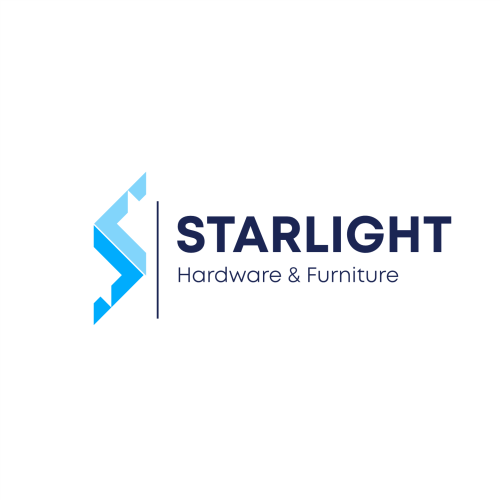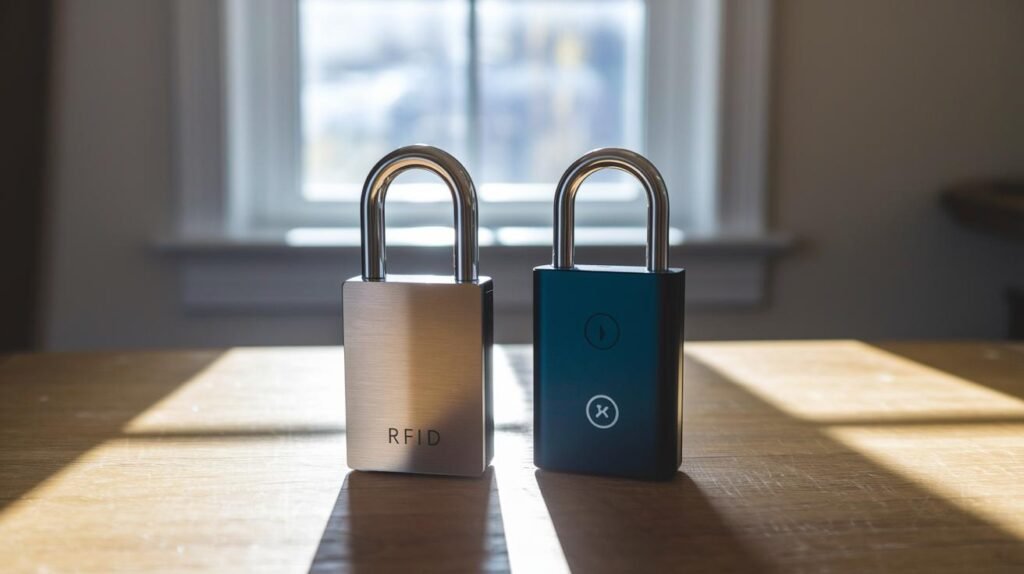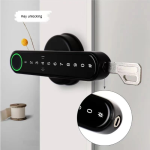Ever thought Bluetooth (short-range wireless tech) cabinet locks were the clear winner? Then meet RFID (radio-frequency ID). It still shines where you need battery-free use and top-notch hygiene. Want to know a secret? RFID never dies on you – no batteries to recharge.
With RFID, you simply wave a card 1 to 3 inches away and hear a reassuring click on the smooth metal faceplate. Exactly the tactile feedback you expect.
On the Bluetooth side, your phone can unlock from 30 feet away. A soft LED glow greets you as the latch glides open. It feels almost like magic.
So how do they stack up? We’ll look at installation, power needs, security, cost, and daily comfort.
By the end, you’ll know which lock makes sense for your space.
Executive Summary: RFID vs Bluetooth Cabinet Locks
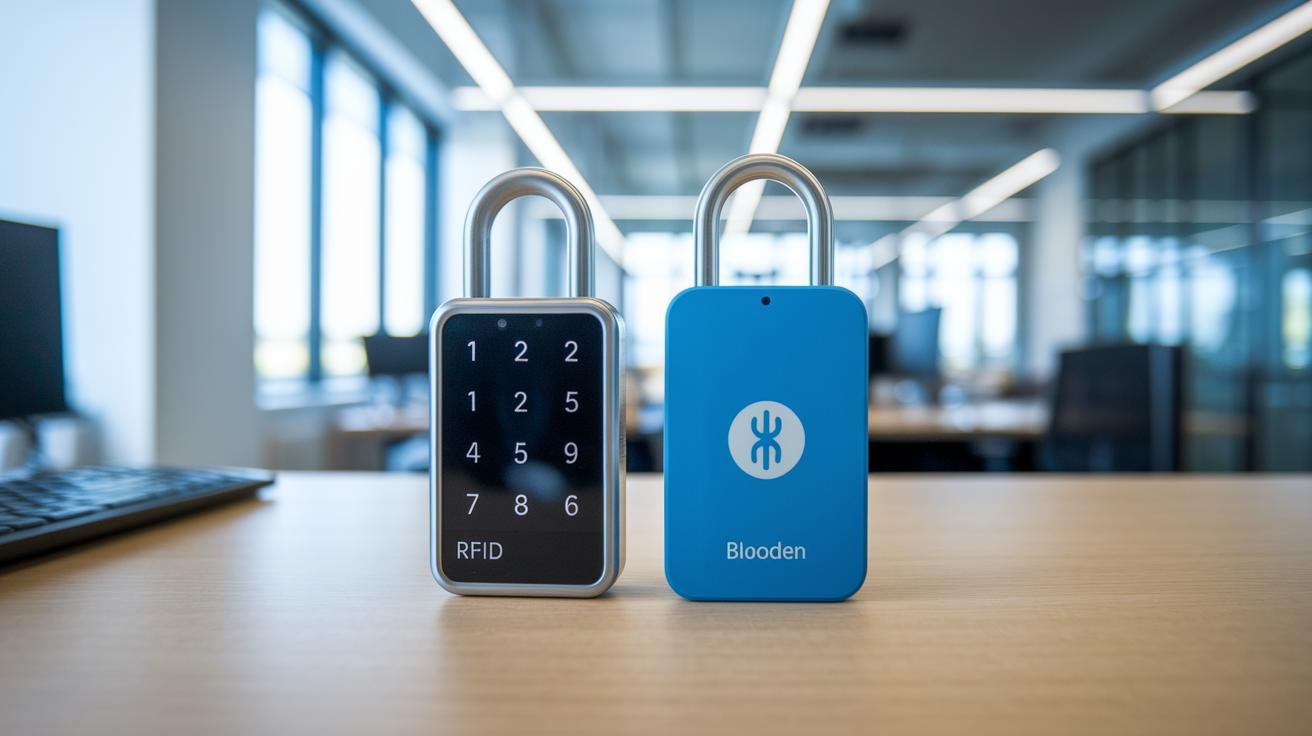
RFID locks open when you wave a card or key fob 1-3 inches away. They get their power from the card (passive power draw) so you don’t need to swap batteries. Almost zero upkeep. Brush the smooth metal faceplate. Hear a reassuring click and you’re in.
Bluetooth locks work with your phone up to 30 feet away. Think of pairing like hooking up your headphones to your phone (Bluetooth pairing). They run on common batteries that last about 6-12 months. A soft LED glow tells you they’re awake. You can add or remove users from anywhere.
But each tech shines in its own setting.
| Technology | Top Use Case |
|---|---|
| RFID | Short-range, hygiene-sensitive settings |
| Bluetooth | Remote access, multi-user facilities |
See Installation & Power, Security & Integration, Cost Analysis & Scalability, and Functionality & User Experience for deeper insights.
Functionality and User Experience in RFID vs Bluetooth Cabinet Locks
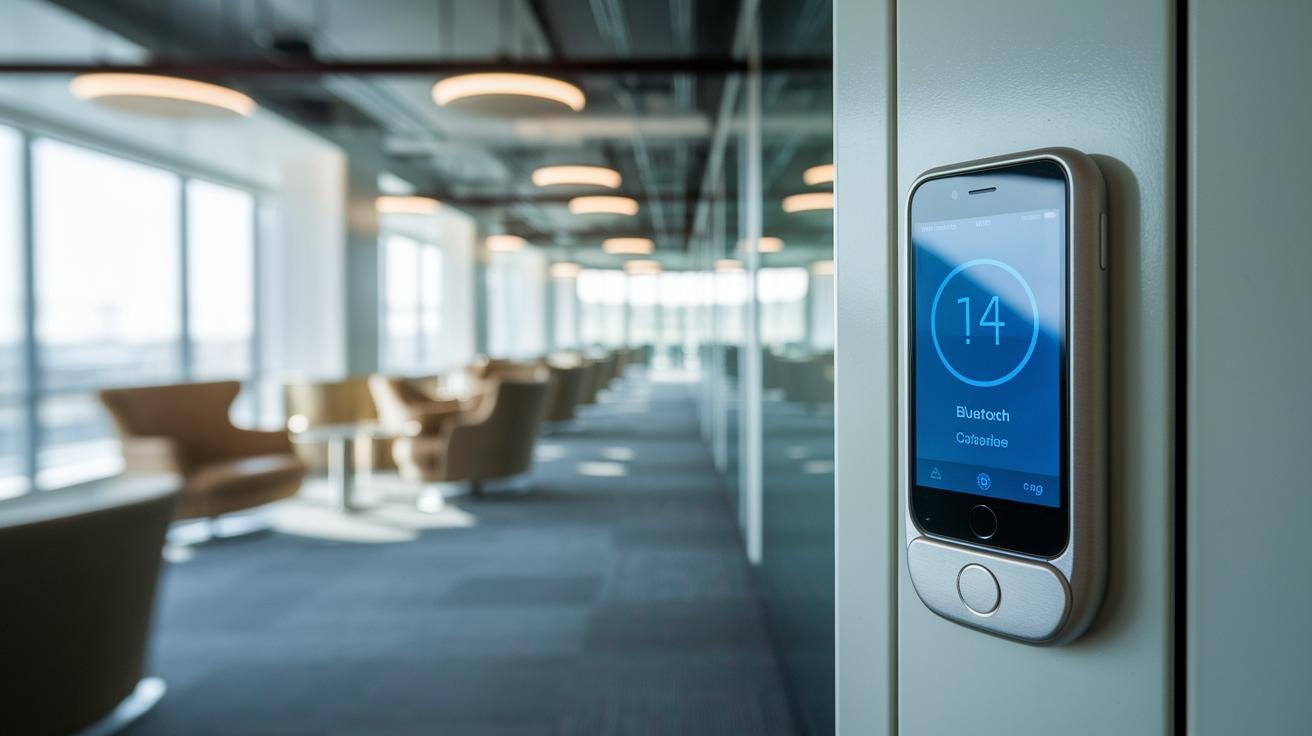
Picking between RFID cabinet locks and Bluetooth cabinet locks often comes down to how easy they are to use every day. Fast, reliable entry beats fumbling with keys, especially when your hands are full. It’s the little things that save you time and frustration.
RFID User Interaction
RFID locks use tag authentication (using radio waves to check your card or fob). You wave your card within 1–3 inches of the reader. A soft LED glow lights up the smooth metal faceplate. Then you hear a reassuring click. No app needed. Just your trusted badge in your pocket.
Setup feels almost plug and play. Staff can start using them right away with minimal training. Handy in busy labs or back offices where you need fast, no-fuss access.
Bluetooth User Interaction
Bluetooth locks pair with your phone in moments, like connecting your headphones to your phone. The smartphone app walks you through multi-factor authentication (extra steps to prove your identity) and user access in a few taps. Then you tap unlock from up to 30 feet away. A soft LED glow on the smooth metal faceplate confirms you’re in.
Push notifications drop instantly, so admins see who’s coming and going. When you pick a trusted smart lock manufacturer China, firmware updates and remote troubleshooting feel seamless. Bluetooth logs every entry remotely, giving you easy records from anywhere. It’s great for on-the-fly user changes, while RFID suits small teams that just need simple swipe-and-go control.
Installation and Power Considerations for RFID vs Bluetooth Cabinet Locks
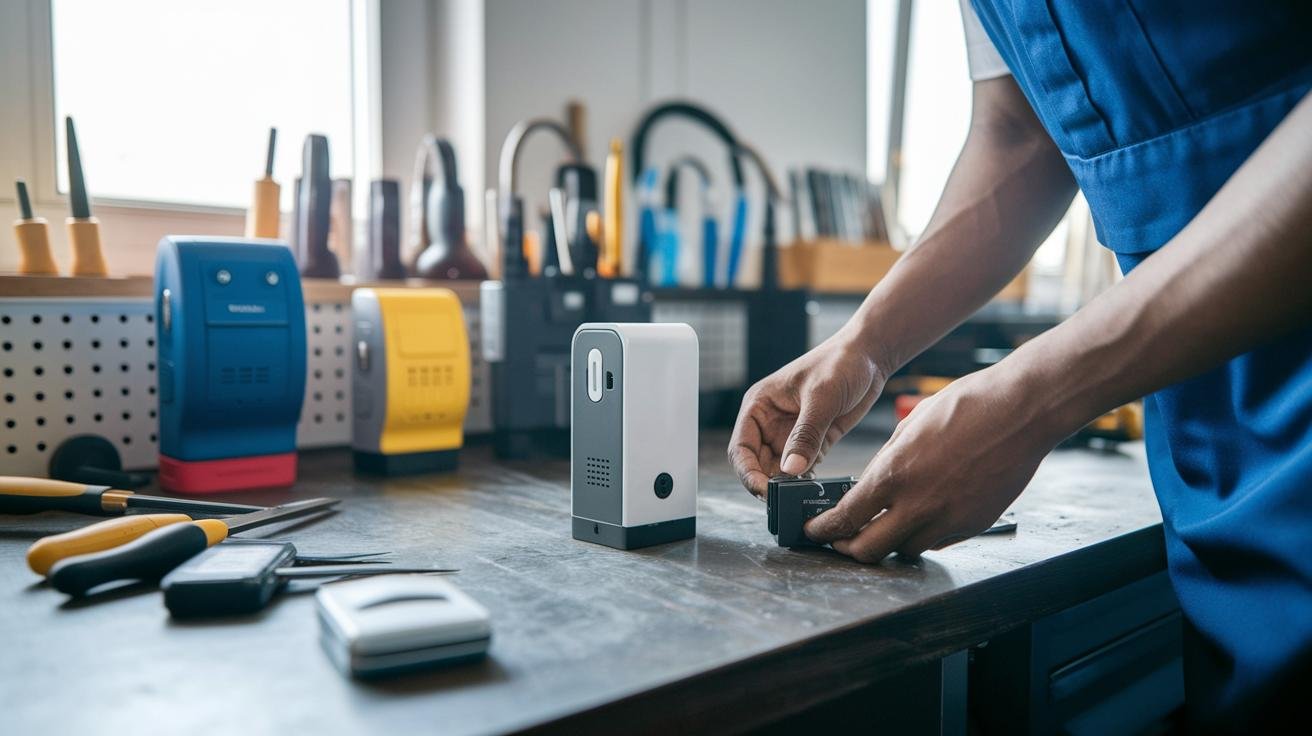
RFID cabinet locks slip onto your existing drawer or door with just two screws. The smooth metal faceplate fits wood or metal frames in minutes. You only need a bit of wiring, no extra power line. Passive RFID models (they pull energy from your card when you tap) have no battery compartment to hide. A quick setup guide walks you through sensor alignment and latch calibration. You’ll see a soft LED glow and feel a reassuring click when it’s locked just right.
Bluetooth cabinet locks hide electronics behind a sleek faceplate. You’ll run a couple of small wires to the strike-plate sensor and snap AA batteries (everyday cells) into a handy compartment. These locks need fresh cells every six to 12 months. The guide also points out a tiny port for firmware updates, complete with a soft glow indicator. Drill a few pilot holes and plan on about 30 minutes for install.
RFID locks need only a quick sensor check now and then, no batteries. Bluetooth locks ping you with low-battery alerts and prompt firmware updates. On busy sites, those reminders keep downtime at bay. Regular upkeep means testing sensors and loading security patches. Little maintenance. Pick RFID if you want almost no upkeep. Or choose Bluetooth if swapping cells now and then and tweaking software fits your routine.
Security and Integration: RFID vs Bluetooth Cabinet Lock Protocols
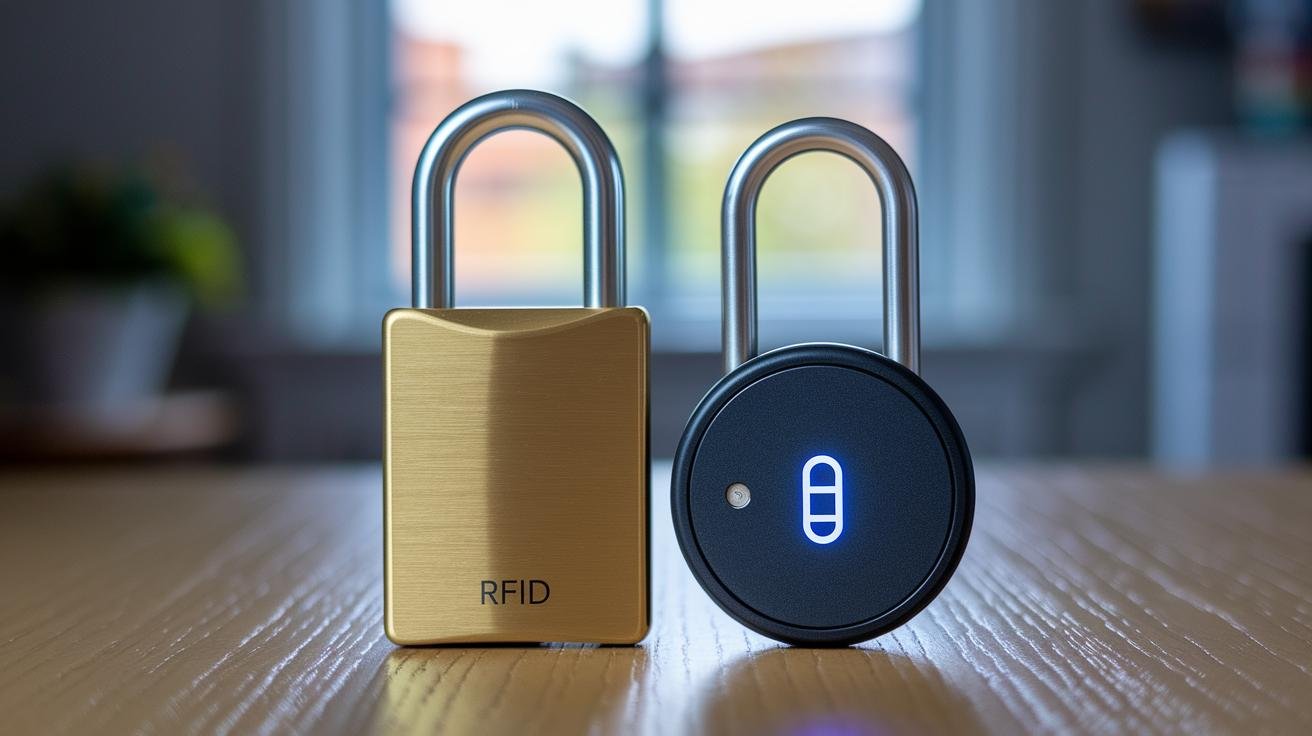
RFID cabinet locks use ISO 14443 encryption (a security standard for short-range radio tags) and a tight 1–3-inch read range to keep hackers at bay. You wake the reader by bringing your badge close to the smooth metal faceplate, where a soft LED glow shows it’s ready. Even if someone swipes a stolen badge, they still need the correct key-fob code. But cloned cards can sometimes fool older systems.
Bluetooth low energy locks lean on AES encryption (a strong way to scramble data) and multi-factor checks (using two or more proofs of ID). Think of pairing like connecting your headphones to your phone, it has to match both ends. Skip a solid pairing code and a hacker might snag that remote-unlock signal.
RFID systems usually come in three management tiers.
Here’s a quick look:
| Tier | Max Users | Key Feature |
|---|---|---|
| Basic | 20 | Self-management at the lock |
| Advanced | 100s | On-site mobile device for user changes and logs |
| Networked | Unlimited | Cloud monitoring, central control, real-time alerts |
Bluetooth low energy lock platforms shine when you tie them into smart security systems. They sync with building management or popular IoT hubs for a unified dashboard. You can check lock status, update user rights, and push firmware patches over the air. The smartphone app handles invites and logs every entry, and you can plug that feed into alarms for unexpected-access alerts.
Here are a few best practices to keep things tight:
- Rotate credentials and disable lost RFID cards right away.
- Set multi-factor checks on Bluetooth locks, mix PIN codes with phone-based tokens.
- Keep firmware up to date and review audit logs for odd behavior.
- Limit cloud access using role-based permissions.
- Run regular vulnerability scans to catch any weak spots.
Security never sleeps.
Cost Analysis and Scalability of RFID vs Bluetooth Cabinet Locks
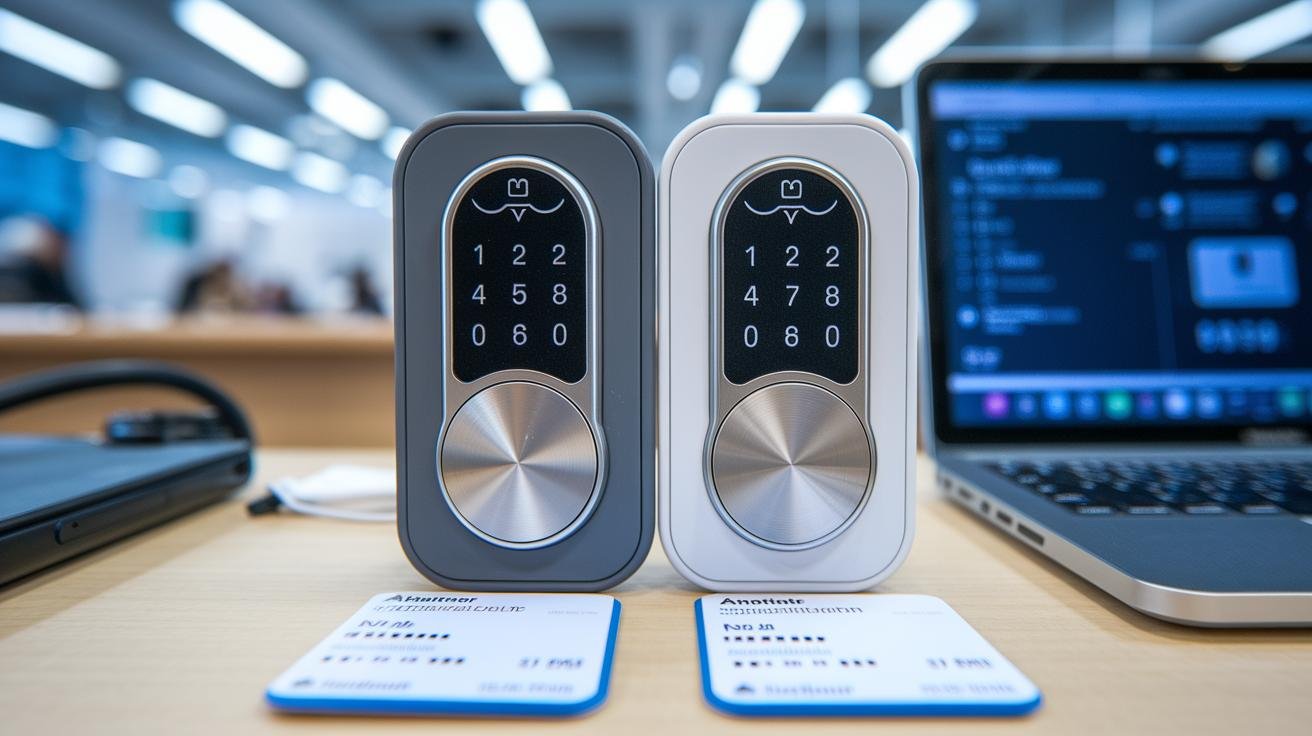
RFID (radio frequency identification) cabinet locks start at around $50 per unit and climb to about $150. Bluetooth (a wireless communication standard) locks sit higher, from $150 to $300 each. That price gap might make you wince. But picture the smooth metal faceplate on each lock and the reassuring click when you close the door.
Admins save hours. No more reissuing cards or rewiring locks when someone moves on. Fewer lost keys. Faster user rollouts. That saved time can cover the upfront cost difference in no time.
Over time, upkeep tells the real story. RFID locks draw passive power (they work without batteries). You won’t budget for cell swaps or constant software patches. Just an occasional sensor check. That’s it.
Bluetooth cabinet locks glow with a soft LED when batteries run low. They also prompt you for firmware updates. You’ll swap AA batteries every six to twelve months and carve out admin hours for remote updates. Those cells and maintenance windows add up, and become a predictable line in your operating budget.
Scalability matters when you grow. Bluetooth locks link straight into cloud dashboards and enterprise access platforms. Adding new users or locations feels as simple as clicking “Invite” in your mobile app. Think of pairing like connecting your headphones to your phone. Effortless.
RFID systems can scale too, but you’ll need extra readers, controllers, and some wiring work. For a dozen lockers, RFID keeps your initial spend low. For hundreds of doors across multiple sites, Bluetooth scales faster.
Use-Case Table: RFID vs Bluetooth Cabinet Locks in Different Environments
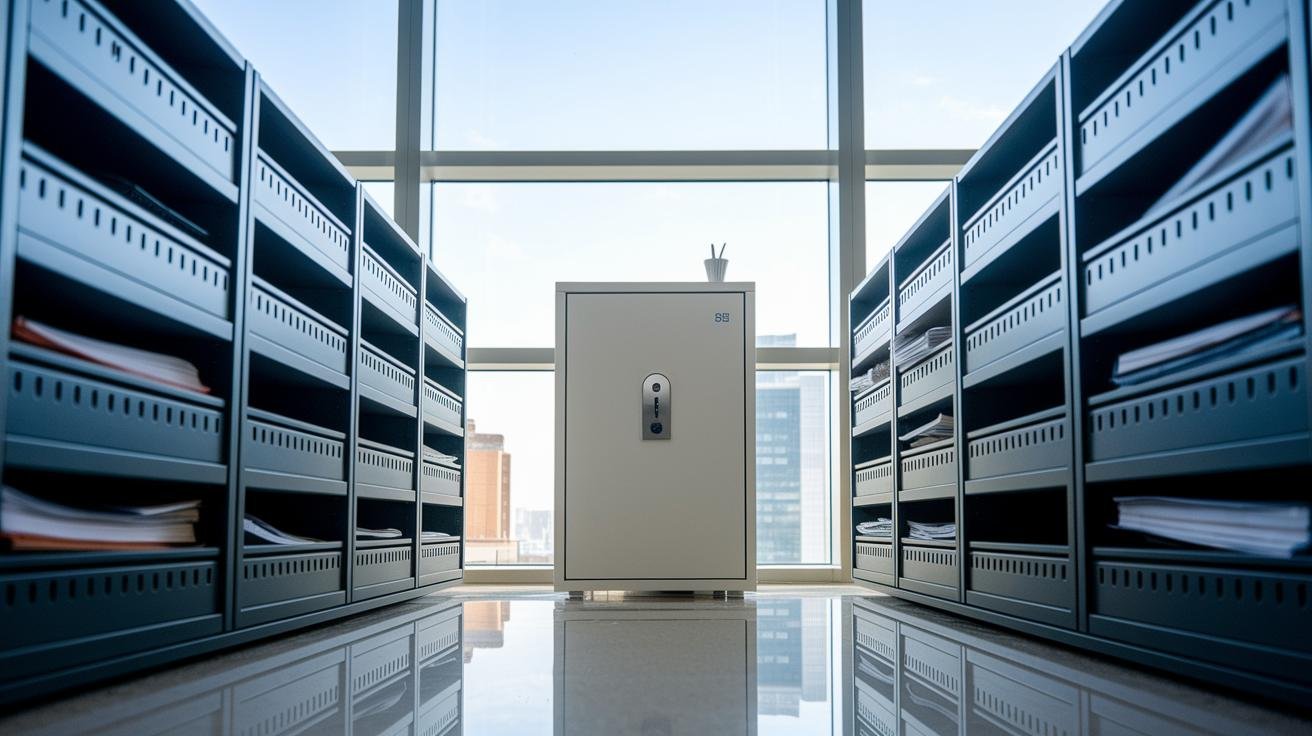
Different places call for different cabinet locks. Homes want style and easy, phone-based access. Offices need shared badges and almost zero upkeep. Clinics require touchless entry that’s fast and germ free. Retail spots balance theft protection with flexible staff access.
In a home, Bluetooth locks shine. You tap your phone, see a soft LED glow, and step right in. You can even send a guest invite from the couch. Solid convenience.
Offices lean on RFID. A quick badge tap unlocks the door. No app updates, no dead batteries. Just reliable access for your whole team.
Healthcare settings trust RFID taps too. You hover your badge near the lock and you’re in, no finger presses, no germs. Fast entry when every second counts.
Retail and warehouse floors often pick Bluetooth. You get real-time access logs and remote unlocks. It’s like having an office key in your pocket, wherever you are.
| Environment | Recommended Technology | Key Reason |
|---|---|---|
| Home | Bluetooth | Phone control, guest invites |
| Office | RFID | Fast badge taps, minimal upkeep |
| Healthcare | RFID | Contactless taps, germ-free |
| Retail | Bluetooth | Remote management, detailed logs |
Back to our locks. Picking RFID or Bluetooth comes down to how many users you have, how you want to track entry, and how much hands-on upkeep you’re up for. Bluetooth gives you long-range phone control and easy invites. RFID delivers lightning-fast badge taps and almost no maintenance. Either way, your cabinets stay locked down so you can focus on what matters.
Starlight Smart Locks: Vendor Spotlight
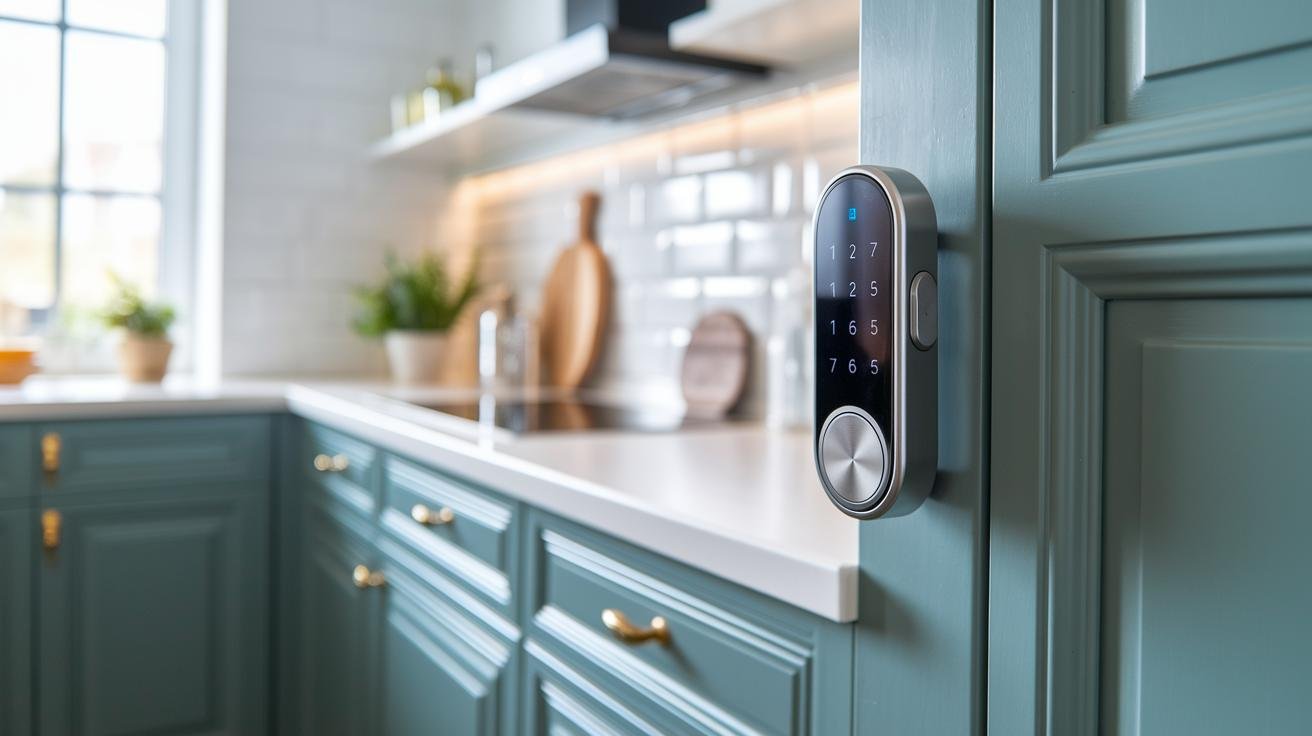
Starlight Hardware has spent 20 years mastering lock making. Their cabinet locks carry CE (European safety mark) and FCC (US radio rules) certificates. That means they’ve passed strict tests so you get reliable security.
Our global support team speaks multiple languages and jumps on tech questions fast. We want you to feel taken care of.
Plus, you choose the warranty that works for you. We offer Standard, Extended, and Platinum plans. It’s up to you.
- Volume pricing starts at 500 units
- Typical lead times: 4–6 weeks
- Direct supplier access for export orders
Check the main article’s feature comparison for details on encryption strength, battery life, retrofit installs (upgrading older cabinets), and integrations. Ready to try a lock? Contact Starlight for demo samples, custom quotes, or export-ready smart locks.
Final Words
Right in the thick of it we compared RFID’s proximity-based simplicity with Bluetooth’s remote control ease. You saw daily user flows, power setups, security layers and cost breakdowns.
We even mapped top use scenarios in a handy table. That gives a clear on-the-ground view.
Choosing between these tech options isn’t guesswork. RFID vs. Bluetooth Cabinet Locks: Which One is Better? now feels like a doable decision. We tested each feature so you can pick with confidence. Happy locking!
FAQ
What is an RFID lock for a gun cabinet?
An RFID (radio-frequency identification) lock for a gun cabinet uses card or fob tags to grant access. It offers touch-free entry, quick metal faceplate reading, and prevents unauthorized firearm handling.
How does an RFID lock work for cabinets and doors?
An RFID lock reads a card or key fob within 1–3 inches. A reassuring click releases latches, requires no wiring, and passive models draw energy from the tag for minimal upkeep.
What is an RFID lock system for hotels?
An RFID lock system for hotels uses guest key cards or wristbands with secure door readers. It logs each entry, supports timed multi-user access, and links to property management for smooth guest arrivals.
How do Bluetooth locks work for drawers and cabinets?
A Bluetooth lock for drawers and cabinets uses a smartphone app within 30 feet to grant access. The crisp app prompts, optional multi-factor checks, and soft LED glow guide each opening.
What is a commercial RFID door lock system?
A commercial RFID door lock system uses card or badge tags to control entry across multiple doors. It offers centralized user management, detailed audit trails, and scalable tiers from basic to cloud-based control.
What are the benefits of RFID door locks?
The benefits of RFID door locks include fast touch-free entry, passive models needing no onboard power, minimal maintenance, and reliable performance in high-traffic, hygiene-sensitive settings.
What are the disadvantages of RFID door locks?
The disadvantages of RFID door locks include potential tag cloning, limited read range demanding precise placement, and the need to issue replacements if cards or fobs go missing.
How secure are RFID locks?
RFID locks use encryption and a short read distance to lower hacking risks. Lost or cloned tags can pose threats, so layered management tiers and regular tag audits boost overall security.
Do smart locks use RFID?
Smart locks often use RFID (radio-frequency identification) alongside Bluetooth or Wi-Fi. They grant card or fob access, pair with apps for remote control, and support multi-factor entry options.
